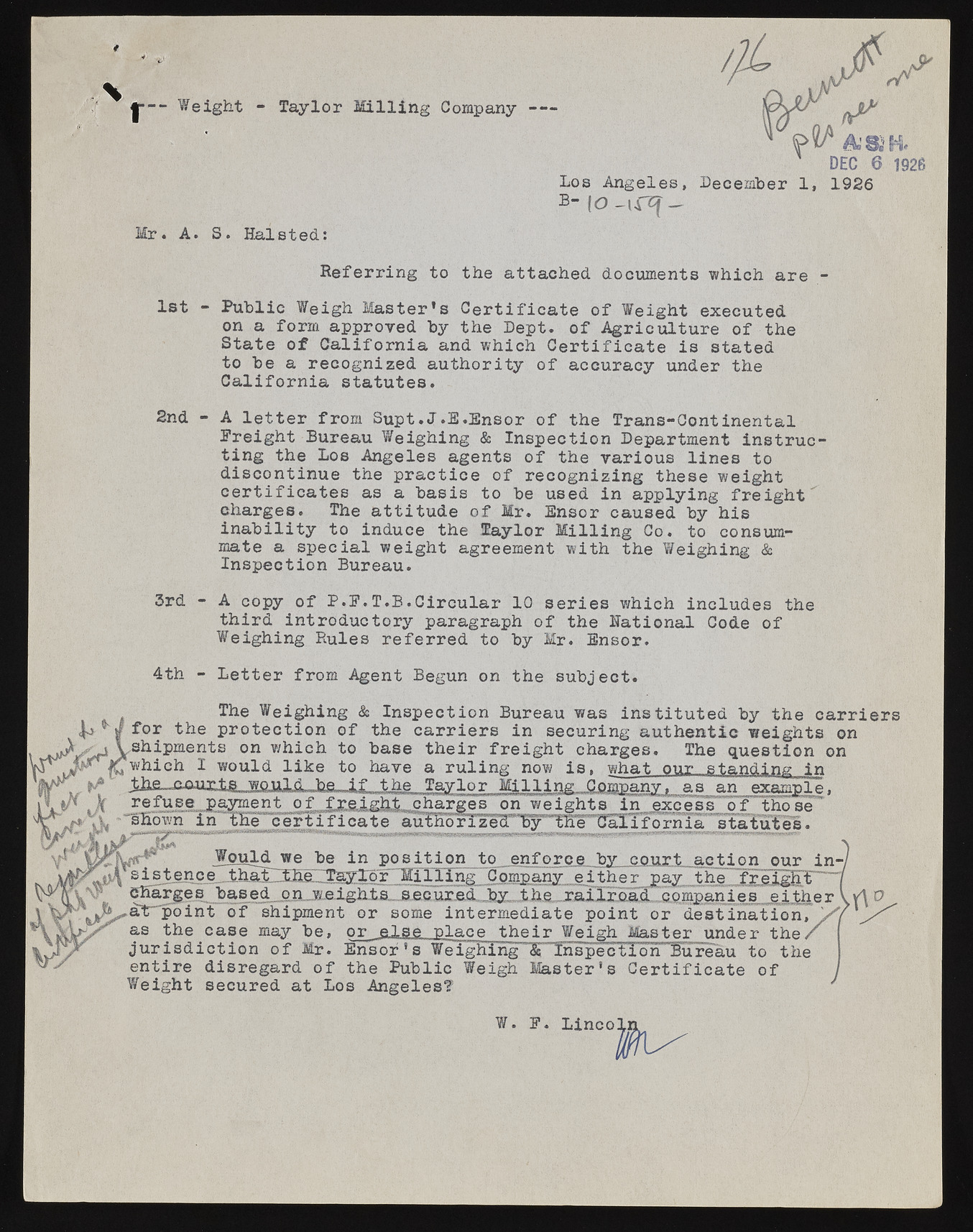Copyright & Fair-use Agreement
UNLV Special Collections provides copies of materials to facilitate private study, scholarship, or research. Material not in the public domain may be used according to fair use of copyrighted materials as defined by copyright law. Please cite us.
Please note that UNLV may not own the copyright to these materials and cannot provide permission to publish or distribute materials when UNLV is not the copyright holder. The user is solely responsible for determining the copyright status of materials and obtaining permission to use material from the copyright holder and for determining whether any permissions relating to any other rights are necessary for the intended use, and for obtaining all required permissions beyond that allowed by fair use.
Read more about our reproduction and use policy.
I agree.Information
Digital ID
Permalink
Details
Member of
More Info
Rights
Digital Provenance
Publisher
Transcription
t |--- Weight - Taylor Milling Company Mr. A. S. Halsted: Los Angeles, B_ [ o - ircf — December 1, 1926 Referring to the attached documents which are - 1st - Public Weigh M a s t e r ’s Certificate of Weight executed on a form approved by the Dept, of Agriculture of the State of California and which Certificate is stated to be a recognized authority of accuracy under the California statutes. 2nd - A letter from Supt.J.E.Ensor of the Trans-Continental Freight Bureau Weighing & Inspection Department instructing the Los Angeles agents of the various lines to discontinue the practice of recognizing these weight certificates as a basis to be used in applying freight” charges. The attitude of Mr. Insor caused by his inability to induce the Taylor Milling Co. to consummate a special weight agreement with the Weighing & Inspection Bureau. 3rd - A copy of P.F.T.B.Circular 10 series which includes the third introductory paragraph of the Rational Code of Weighing Rules referred to by Mr. Insor. 4th - Letter from Agent Begun on the subject. The Weighing & Inspection Bureau was instituted by the carriers for the protection of the carriers in securing authentic weights on shipments on which to base their freight charges. The question on which I would like to have a ruling now is, what our standing in the_aauriis -yyould-bs jf the Taylor Mllling_J3jftfflpany, as an example, refuse payment of f r e i g h t ’charges on weights in excess"of those "shown i i f t h ^ c e r t i f i c a t e a u T E o r T z e H ^ W B*TEen3aIlTornTa jppi ip statutes. W o u l d we be in position to enforce by court action our sistence"Ithatllh„e^Taylo~r"”HiLllhg Company either pay the freigHT~~~ charges based pjaL^taljghta^ ..railiaicL .companies e 1t.hp»r atrpoint of shipment or some intermediate point or destination, as the case may be, or eJ.se place their Weigh Master under the jurisdiction of Mr. E n s o r ’s Weighing & “lnspection Bureau to the entire disregard of the Public Weigh M a s t e r ’s Certificate of Weight secured at Los Angeles? W. F. Lincoln

